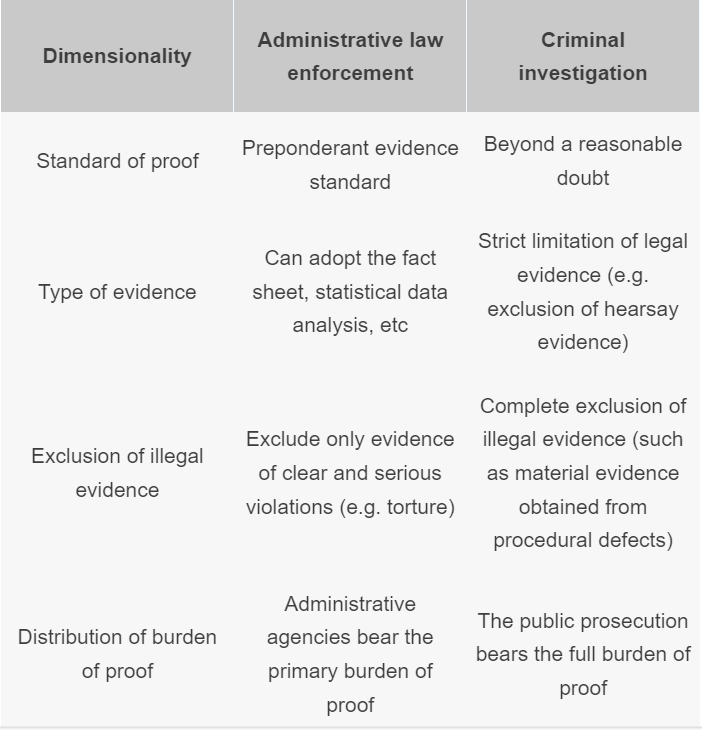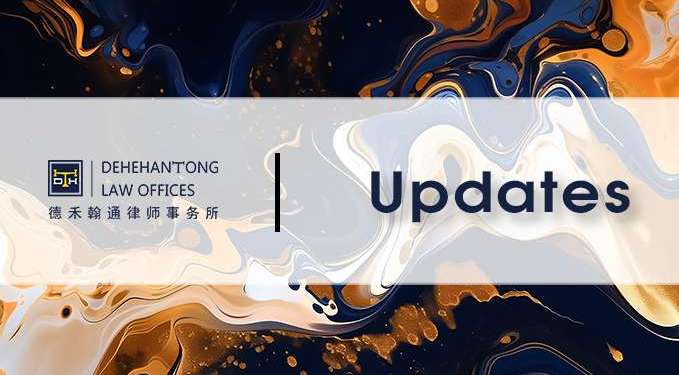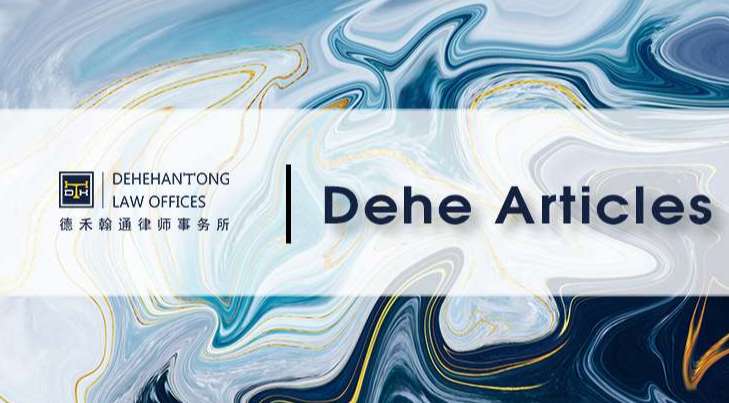Securities Issuance of Securities Crime Part 2: Defense Strategy -- Key Points and Evidence Breakthrough (Part 1)
Securities and futures crimes have been subject to the upgraded jurisdiction system since 2012, that is, the investigation organ is the public security organ above the prefecture-level city, the intermediate people's court conducts the trial, and the public prosecution organ at the same level prosecutions. After 2016, securities crime investigation bases of the Public Security Bureau of five provinces and cities were established and handled by the regional economic investigation corps. Taking the jurisdiction of Shanghai as an example, it will initially be investigated by the Shanghai Securities Regulatory Bureau, and if suspected of criminal crimes, it will be transferred to the Shanghai Public Security Bureau for investigation, and then the first branch of the Shanghai People's Procuratorate (a branch) will initiate public prosecution, and the Shanghai First Intermediate People's Court will make a judgment. The whole process is handled by skipping all district-level units, which shows the importance and professionalism of such criminal acts at the level of case-handling organs, which also requires parties and lawyers to attach great importance to such cases and make adequate preparations to deal with them. This paper is divided into two parts. The first part analyzes the common problems of the defense in the securities issuance link, especially the key rules and types of evidence. The second part will carry out a detailed analysis of the defense methods of specific charges in the issuance link, in order to help readers have a more comprehensive and professional handling of the cases in the issuance link.
01.Securities crimes in the execution of convergence issues
When it comes to securities crime, an inescapable problem is the convergence of execution. Due to the uniqueness of securities crime itself, the issue of linking administrative law enforcement and criminal justice has always been accompanied by securities cases. Although theories and practices have paid much attention to this issue, a unified approach has not yet been formed in practice, which brings great obstacles to the defense of securities crime cases, including procedural issues and substantive issues. The author will combine the case and the current legal provisions and practical experience to sort out the feasibility path.
The development of the linkage mechanism of securities crime execution is closely related to the process of capital market rule of law. Before 2014, administrative regulations made provisions for the timely transfer of criminal clues, but the transfer standards and procedures need to be further clarified. In the following ten years, the Securities Law in 2019 and the Administrative Punishment Law in 2023 have been strengthened several times, and there is still no specific standard for transfer in practice. Until April 2024, the Supreme People's Court, the Supreme People's Procuratorate, the Ministry of Public Security, and the CSRC jointly formulated and issued the Opinions on Several Issues Concerning the Handling of Securities and Futures Illegal and Criminal Cases (hereinafter referred to as the "Opinions"), which provided an institutional guarantee for the execution of the connection.
(1) The principle of handling illegal and criminal acts in the field of securities - the principle of criminal priority
1. Understanding of the principle of criminal priority
The principle of criminal priority requires the administrative organ to immediately suspend the administrative punishment procedure and transfer the case to the judicial organ for criminal responsibility if it is found that the act is suspected to constitute a crime when investigating an administrative violation case. In securities and futures criminal cases, the application of the principle of criminal priority is particularly strict, because such crimes are often professional, hidden and social harm. In practice, when the CSRC finds market manipulation, insider trading and other suspected crimes in the investigation, it needs to transfer the case to the public security organ as a whole, and decide whether to impose administrative punishment after the conclusion of the criminal judicial procedure. However, it should be noted that if the illegal behavior may cause imminent harm to the market order or public interest (such as continued manipulation of stock prices), the administrative organ can take "heterogeneous penalties" (such as ordering business suspension, revocation of licenses) before the transfer, such penalties and penalties complement each other, and do not violate the principle of criminal priority.
From the perspective of legal provisions, our country is inclined to the principle of criminal priority for the suspected crime of securities violations. Article 27, paragraph 1, of the Administrative Penalty Law stipulates that if an illegal act is suspected of committing a crime, the administrative organ shall promptly transfer the case to the judicial organ and investigate the criminal responsibility according to law. Where there is no need for criminal responsibility or exemption from criminal punishment according to law, but administrative punishment should be imposed, the judicial organ shall promptly transfer the case to the relevant administrative organ. This article establishes the legal status of the principle of criminal priority through the semantic design of "one right and one opposite". China Securities Regulatory Commission "Securities and Futures illegal acts Administrative punishment Measures" [No. 186 Order] Article 27 of the case investigation, the China Securities Regulatory Commission and its agencies according to the different circumstances of the case, the approval of the person in charge of the unit, respectively, to make the following decisions: (1) If there is indeed an illegal act that deserves administrative punishment, a decision on administrative punishment shall be made according to the seriousness of the circumstances and the specific circumstances; (2) If the illegal act is minor and can not be given administrative punishment according to law, no administrative punishment shall be given; (3) If the illegal facts cannot be established, no administrative penalty shall be imposed; (4) Where an illegal act is suspected of committing a crime, it shall be transferred to a judicial organ according to law.
On the surface, the law and relevant judicial interpretation have made clear and explicit provisions on the principle of criminal priority, but in fact, because the punishment margin of securities crimes is relatively vague, and the emphasis of administrative violations and criminal crimes are different, this principle is not easy to practice. One of them is the conflict of evidence transformation. The verbal evidence collected by administrative organs needs to be collected again in criminal procedure, but in practice, the evidence chain is often broken due to the parties' reversal. For example, in an insider trading case, the self-admission record obtained by the SFC was eventually excluded by the court because it was not re-fixed through the criminal interrogation procedure; Second, there is room for optimization of the cooperation mechanism between departments. Administrative organs and judicial organs have different judgment criteria for "suspected crimes". For example, the CSRC's transfer standard for market manipulation cases focuses on the trading volume index, while the public security organs require proof of subjective manipulation intent. May lead to some cases "should be moved".
2. Obstacles in practice
(1) From a procedural point of view, there are obstacles to evidence conversion and department collaboration
The Green Land case is a landmark case of fraudulent stock issuance in the history of securities in China, and also a representative case of applying the principle of criminal priority. From 2004 to 2007, Greenland Biotechnology Co., LTD. (hereinafter referred to as "Greenland") engaged in systematic financial fraud through inflated assets, fictitious transactions, forged contracts and other means, inflated operating income of 296 million yuan and inflated assets of 288 million yuan, and finally successfully listed on the Shenzhen Stock Exchange in December 2007. In 2010, after the CSRC launched an investigation, it was found that his behavior was suspected of constituting the crime of fraudulent issuance of shares under Article 160 of the Criminal Law, and the case was transferred to the public security organs. In 2013, the Kunming Intermediate People's Court made a criminal judgment, finding that Green Land and He Xuekui and other responsible persons constituted the crime of fraudulent stock issuance, and sentenced the company to a fine of 4 million yuan, and sentenced He Xuekui and other responsible persons to fixed-term imprisonment and fines. After the conclusion of the criminal procedure, the SFC imposed administrative penalties on Greenland and relevant responsible personnel in 2014, including fines and market entry bans.
But this case also reflects the characteristics of the convergence of executions. After the CSRC transferred the case, the public security organs needed to re-investigate due to differences in evidence standards, resulting in a case processing cycle of up to three years. At the same time, investors delayed the start of civil compensation proceedings due to the priority of criminal procedures until 2014 after the criminal judgment took effect. Although the "Securities Law" stipulates that civil compensation is priority, in practice, the fines and fines have been turned over to the Treasury, and the refund procedure is complex, and the actual proportion of investors is low. (2) From the substantive point of view, there is a conflict between the ambiguity of the execution boundary and the standard. The ambiguity of the entity boundary of administrative violation and criminal crime is mainly reflected in the technical differences of the legal constitutive elements. Taking the manipulation of the securities market as an example, although the law does not provide specific quantitative standards for administrative penalties, in practice, the CSRC will focus on judging based on objective transaction indicators, such as the proportion of funds, the proportion of capital advantages and other quantitative standards. Criminal conviction requires proving that the perpetrator has "manipulative intent" and "serious circumstances" subjective and comprehensive circumstances.
This difference is particularly typical in the "Xu Xiang case" : In 2015, the CSRC determined that he manipulated stock prices based on abnormal trading data and transferred it to the public security organs, but the public security organs returned to supplementary investigation because they could not directly deduce "manipulation intent" from the trading data. Until the "trading instruction notebook" and other documentary evidence of Xu Xiang's dealings with listed company executives were seized, the subjective and intentional evidence chain reinforcement was completed, and the case was transferred to prosecution for nearly 2 years. Similar problems also appeared in the "Tianshan biological case", the parties used the advantage of funds to continuously lift the stock price, but because the trading strategy disguised as "normal adjustment", resulting in subjective and intentional evidence difficulties, and the case took up to 11 months to make up the evidence repeatedly in the execution of the connection.
The "long standby" of such cases will often bring extremely adverse effects on the proposed listed enterprises. In the process of up to two or three years, regardless of whether the final determination constitutes a criminal crime, the shareholders have basically lost confidence in the involved enterprises in the capital market, and the relevant persons in charge of the enterprises have also experienced long-term freedom restrictions. Therefore, in the early stage of administrative investigation, enterprises or individuals should appoint lawyers to intervene in time to prevent cases from sliding into criminal procedures.
(2) The connection of evidence between administrative law enforcement and criminal investigation
1. Differences between administrative law and criminal law rules of evidence
The differences in evidence rules between administrative law and criminal law are essentially due to the fundamental differences in legislative purposes and dimensions of proof:
(1) Legislative purpose:
Administrative law takes maintaining management order and improving law enforcement efficiency as the core, and the rules of evidence focus on the rapid characterization of illegal acts. The criminal law aims at punishing crimes and protecting human rights, and the rules of evidence strictly follow "beyond reasonable doubt".
(2) Proof dimension:

The differences in these aspects will produce huge differences in the identification of responsibility in the handling of cases. Taking a case of leaking inside information handled by the author as an example, the perpetrator was identified as leaking inside information in the administrative penalty decision of the CSRC, and this case does objectively meet the criminal standard. After transferring the case to the public security organ for investigation, the defender put forward the view that the perpetrator lacked subjective intention. Administrative punishment mainly determines the administrative illegality of insider trading through the elements such as the coincidence between securities trading activities and inside information. Such illegality includes both intent and gross negligence, while criminal crime only includes intent without negligence, and the case was eventually not investigated for criminal responsibility because it could not be proved that the parties had subjective intent.
2. Evidence transformation conflict: from administrative evidence to criminal evidence
The limited effectiveness of evidence collected by administrative organs in criminal proceedings mainly reflects the following points:
(1) Limited transformation of objective evidence:
According to Article 54 of the Criminal Procedure Law, objective evidence such as physical evidence, documentary evidence and audio-visual materials collected by administrative organs can be directly used as criminal evidence, provided that the source is indicated. For example, the documents such as the bond offering prospectus and underwriting agreement obtained by the CSRC in "a fraudulent issuance case" are directly adopted after a formal review by the public security organs.
(2) Re-collection of verbal evidence:
Oral evidence such as party statements and witness testimonies shall be collected again by the judicial organ. In "a financial fraud case", the self-confessed record obtained by the CSRC was excluded by the court on the grounds that "voluntary nature cannot be guaranteed" because the recording was not synchronized, resulting in the invalidation of key evidence.
(3) Focus of conflict:
The game between efficiency and justice: the differences in evidence collection procedures under different procedural value orientations objectively form the optimization needs of evidence conversion processes. For example, administrative organs generally conclude cases quickly and the evidence collection procedures are relatively simple (such as no whole recording and video recording), but criminal procedures require correction of evidence, resulting in increased evidence connection costs.
Differences in the identification of technical evidence: For new types of evidence such as big data model analysis and algorithmic transaction logs, administrative organs can directly adopt them, while judicial organs require them to be converted into expert opinions or expert witness testimony.
3. Institutional development
The promulgation of the Opinions in 2024 is an important development of the law enforcement and judicial system in the field of securities and futures. The Opinions have detailed the rules for the connection of the whole process of securities and futures cases from administrative law enforcement to criminal justice, clarified the principles that should be moved, arrested when arrested, and prosecuted when prosecuted, and unified the judicial standards for law enforcement, clarified the rules for determining the place of crime of related crimes, and reduced jurisdictional disputes.
02.The combination of prior defense and defense in the matter
The number of securities crime case files is very large, the author has handled hundreds of insider trading case files, which puts forward higher requirements for the professional and systematic defense strategy of lawyers, in order to better prevent the risk of securities cases, we should combine the defense in advance and the defense in the matter.
(1) Defense in advance
1. Risk prediction
Early involvement of criminal lawyers: Securities crimes are often started by administrative investigations, lawyers need to intervene at the initial stage of the CSRC filing, by combing transaction records, financial data and documents involved, to predict whether the behavior only constitutes administrative violations or has violated the criminal law. The quantitative standards involved in securities crimes need to introduce legal and financial experts to assist in analyzing audit reports, so as to avoid wrongful transfer due to technical misjudgment.
The hearing procedure in the process of administrative punishment is particularly important: at the hearing stage of the CSRC administrative penalty, lawyers should overturn or weaken the charges of the regulator through cross-examination around the core controversial points. Effective defense at this stage can directly block the case from being transferred to criminal procedure, or lay a favorable factual foundation for subsequent criminal proceedings
2. Whether to surrender
Surrender plays a very important role in the sentencing circumstances of criminal cases, which sometimes affects whether the bail can be released pending trial in the early stage of the case, the sentencing suggestion of the mid-term guilty plea and whether the final sentence can be directly downgraded, especially in the case of the general prison term of securities crimes is not high, which may directly affect whether the probation can be applied. Securities crime has a high degree of concealment, and the parties often have a surrender window period. However, surrender itself also means admitting the facts of the crime and will face criminal punishment, whether to surrender, at what time to surrender requires lawyers to help the parties make a very accurate judgment, in order to minimize the harmful consequences.
The constituent elements of surrender include active surrender and truthful confession. Voluntary surrender is not difficult to understand, but the criteria for identifying a truthful confession are very complex. There are many practical skills on how to be frank and lenient within the scope of investigation of the investigation organ. In the early stage of investigation by the CSRC, if the facts involved in the case have not been fully exposed, lawyers should fully explain the laws and procedural rules before accompanying the parties to surrender without further aggravating the criminal facts on the basis of ensuring the circumstances of surrender. Laying the groundwork for a defense in the case once it's officially started.
(2) Defense during the case
1. The start and end time of the behavior involved
The time point of behavior in securities crimes includes two very important issues: the first is the limitation of the time period of criminal behavior, the definition of such behavior time point directly affects the identification of crime and non-crime, crime amount and illegal income. Second, due to the frequent revision of securities crimes related charges in recent years, the Criminal Law Amendment (XI) has adjusted the sentencing of various charges. Before the amendment, the sentencing of some charges is relatively light, and it is necessary to make good use of the retroactive principle to reduce penalties from the old and lenient principle.
For example, the continuous trading duration of the crime of manipulating the securities market should coincide with the abnormal fluctuation cycle of the stock price, and the "sensitive period" of the crime of insider trading should be calculated from the formation of inside information. How to accurately determine the time point of each crime will be explained in detail in the subsequent analysis of the defense of each crime, and this article only interprets the common cross-examination rules.
2. Cross-examination of special evidence
(1) Case transfer letter
The "Case transfer Letter" issued by the administrative organ represented by the CSRC is the core document of the execution connection, and the cross-examination of the "case transfer Letter" mainly includes the following aspects:
First, whether the case Transfer Letter has legality. According to the "Opinions" and other relevant documents, the transfer letter should be attached to the relevant explanatory materials. If key financial data or transaction records are missing, procedural violations can be claimed, and it is necessary to verify that the transfer letter was served on the parties and inform them of the right to review.
Second, the type of evidence in the "case Referral Letter". The transfer letter itself does not belong to the types of statutory evidence in criminal proceedings, and different types of evidence are subject to different cross-examination rules. At present, there is no unified opinion on the nature of the transfer letter in judicial practice, but lawyers should request a comprehensive review in the defense process, and can not take the determination of the administrative organ as the basis for determining the facts of the case directly.
(2) Confirmation letter
According to relevant laws and regulations, the CSRC has the right to identify inside information, informed personnel, etc., which is directly related to the establishment of relevant crimes. As a special administrative recognition, the letter of identification is essentially an opinion, which can be used as a reference for handling cases, but it cannot be directly used as a basis. However, in practice, many courts will directly adopt the content of the confirmation letter of the CSRC, but there are major disputes over its evidentiary attributes. In relevant cases, lawyers can start from the form (such as the confirmation letter is usually only stamped with the official seal without the signature of the specific handler). In violation of the "Criminal Procedure Law" on the form of expert opinion requirements) and substance (such as the identification letter does not have sufficient factual basis, etc.) to fully cross-examine the identification letter.
(3) Forensic accounting expert opinion
Forensic accounting appraisal is the core evidence of the amount of securities crime, which is not only securities crime, but also plays a very important role in all economic crime cases. At present, the theory and practice circles have formed relatively perfect rules for the cross-examination of appraisal opinions, but the professional construction of judicial accounting appraisal opinions in judicial practice is still in the deepening stage (the author has more or less procedural or substantive defects in the forensic accounting appraisal opinions involved in a large number of economic crime cases handled by the author). In practice, it is very difficult to overturn this most crucial evidence, which puts forward higher requirements for lawyers' cross-examination ability. It is mainly divided into the following parts:
First, the qualification of appraisal institutions and appraisal personnel. In practice, the qualification of appraisal institutions and appraisal personnel generally meet the standards, but some appraisal institutions will ignore the identification seal, which is very detailed in the Criminal Procedure Law and the General Principles of Appraisal.
Second, the examination of the source of the appraisal opinion. There are a lot of things worthy of cross-examination in the source of inspection opinions, and there are different requirements according to different types of cases. Generally speaking, the identity, authenticity of inspection materials and whether the verbal evidence meets the standards of financial accounting data need to be tested one by one.
Third, review of identification processes and methods. Most appraisal opinions record the calculation process and method briefly. However, in fact, due to the difference between accountants and lawyers, judicial audit only performs simple calculation and summary based on the existing evidence in most cases, while the legal determination of the amount of crime or illegal income has more complex logical standards. For example, the amount of crime corresponding to the purpose of illegal possession can not be obtained by calculation, so in the process of cross-examination, it is necessary to pay attention to the calculation logic of the appraisal opinion. If the logic is wrong, the calculation result should not be used as the basis for determining the crime fact.
Fourth, the review of appraisal and notification procedures. According to the provisions of Article 148 of the Criminal Procedure Law, the expert opinion shall be informed to the criminal suspect and defendant in a timely manner to ensure their right to cross-examine. But in practice, many agencies do not inform them. The parties themselves are the most clear about the facts of the case, and the accuracy of the identification process and results must be approved by themselves. Lawyers also need to check with the parties to ensure the authenticity and accuracy of key evidence.
Fifth, review of the calculation results of appraisal opinions. According to the author's previous case handling experience, there are usually errors in the calculation results of appraisal opinions, mainly because the evidence in criminal cases requires the unity of subjectivity and objectivity, that is, verbal evidence needs to be corroborated by objective evidence such as contracts and transfer vouchers, while securities crimes usually involve a huge amount of money, accountants will inevitably make mistakes in the verification of multiple pieces of evidence, and lawyers will make mistakes if they find mistakes. Sometimes it is even possible to withdraw investigation, thereby obtaining a reduction in sentencing.
The above are some common problems encountered in the defense process of securities crimes in the issuance link, the next chapter will carry out a detailed interpretation of the crime and non-crime, this crime and that crime defense methods for the crime of fraudulent issuance of securities, the crime of providing false supporting documents, the crime of unauthorized issuance of stocks, companies, and corporate bonds.
Recommended Information
-
UpdatesSix lawyers from Dehehantong were selected into Taizhou Foreign-related Legal Services (Shanghai) Expert Database2025-03-21
-
UpdatesDehehantong has conducted in-depth exchanges with the Asia Pacific International Arbitration Court to explore new opportunities for international commercial arbitration2025-03-20
-
ArticlesCore characteristics and regulatory policy trends of listed company restructuring plan in 20242025-03-13
-
ArticlesOutbound and Overseas Investment Filing (ODI)2025-03-11
-
UpdatesDehehantong signed a commercial mediation "peace" plan to promote the optimization and upgrading of the business environment2025-03-06















